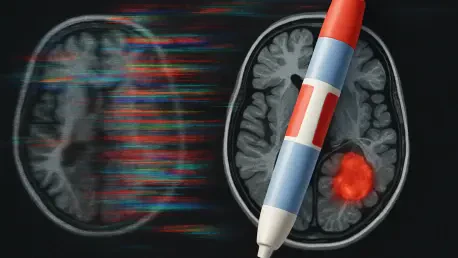In a startling revelation that has caught the attention of the medical community, a popular medication used for weight loss and diabetes management, Ozempic, may pose an unexpected challenge in the realm of diagnostic imaging. Known for its effectiveness in controlling blood sugar and aiding significant weight reduction, this drug belongs to a class called GLP-1 receptor agonists, which have transformed treatment options for many patients. However, recent observations suggest that its influence on the body might extend beyond therapeutic benefits, potentially disrupting critical tools used to identify serious conditions like cancer. This emerging concern centers on how the medication interacts with imaging scans, raising questions about the reliability of these diagnostic methods for users of the drug. As healthcare providers and researchers grapple with this issue, the balance between the drug’s advantages and its unintended effects becomes a pressing topic for discussion in medical circles.
Unraveling the Impact on PET-CT Imaging
The core of the concern lies in how Ozempic appears to alter the results of PET-CT scans, a vital imaging technique used to detect cancer, organ diseases, and metabolic disorders. These scans utilize a radioactive tracer known as FDG, which diseased cells absorb more readily, highlighting abnormal activity for physicians to analyze. Reports indicate that the drug may interfere with FDG distribution in the body, potentially masking signs of malignancy or other abnormalities. Such interference could lead to misleading results, where critical health issues remain undetected or are misinterpreted, delaying essential treatment. This poses a significant risk, especially given the importance of early detection in improving patient outcomes for conditions like cancer. As the use of GLP-1 drugs continues to rise globally, understanding and mitigating this effect on diagnostic accuracy has become a priority for medical professionals who rely on precise imaging to guide their decisions.
Addressing Risks and Future Research Needs
Looking back, the medical field faced a challenge when it became evident that Ozempic’s influence on PET-CT scans could obscure vital diagnostic markers, prompting a wave of concern among healthcare providers. This issue underscored the necessity for a deeper investigation into how GLP-1 receptor agonists interact with imaging technologies. Experts advocated for comprehensive studies to map out the extent of this interference and to develop strategies that could counteract it. Recommendations included a thorough review of patients’ medication histories before scheduling scans to anticipate potential disruptions. Additionally, there was a push for heightened awareness within the medical community to ensure that diagnostic protocols adapted to these findings. Reflecting on this period, the focus was on creating guidelines that balanced the undeniable benefits of the medication with the need for accurate disease detection, paving the way for safer and more reliable patient care in subsequent years.









